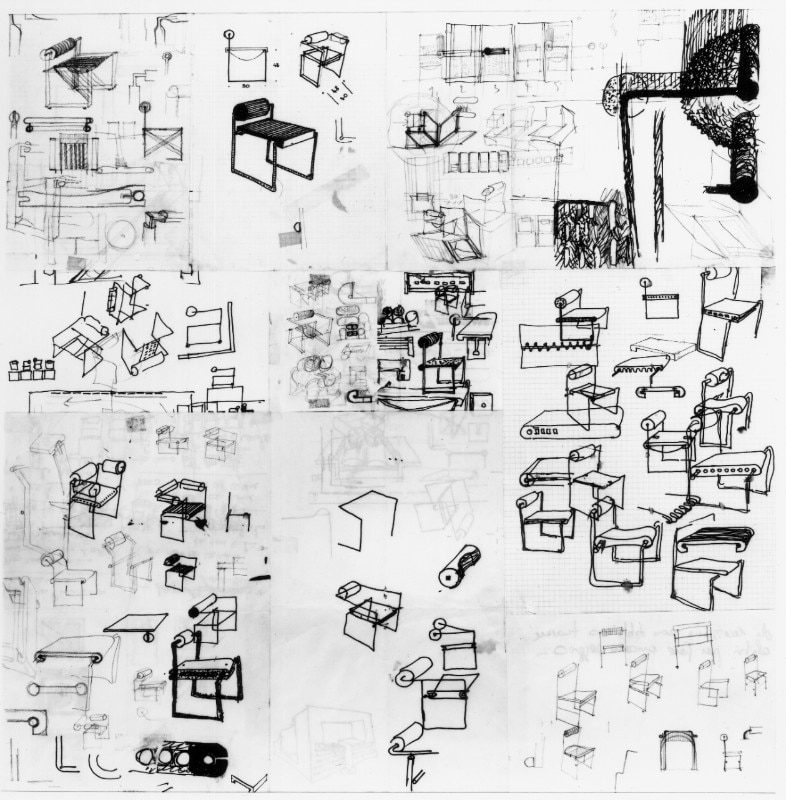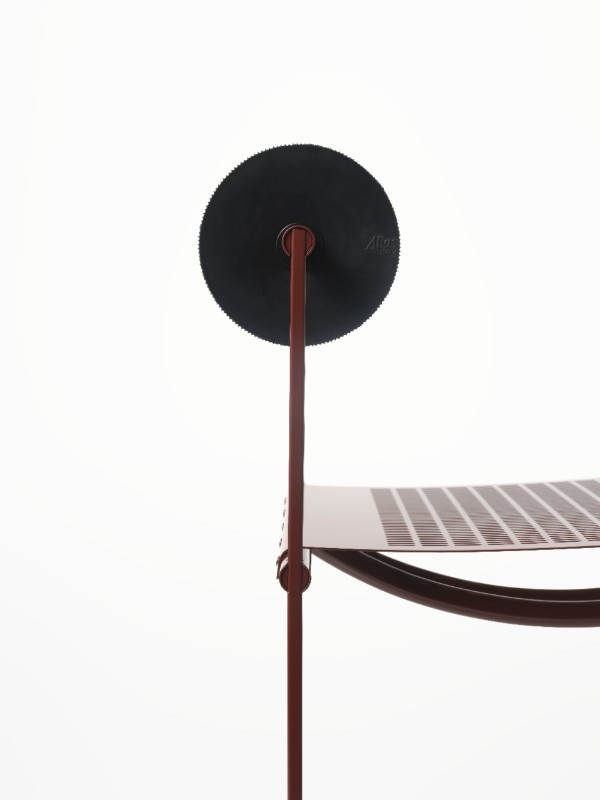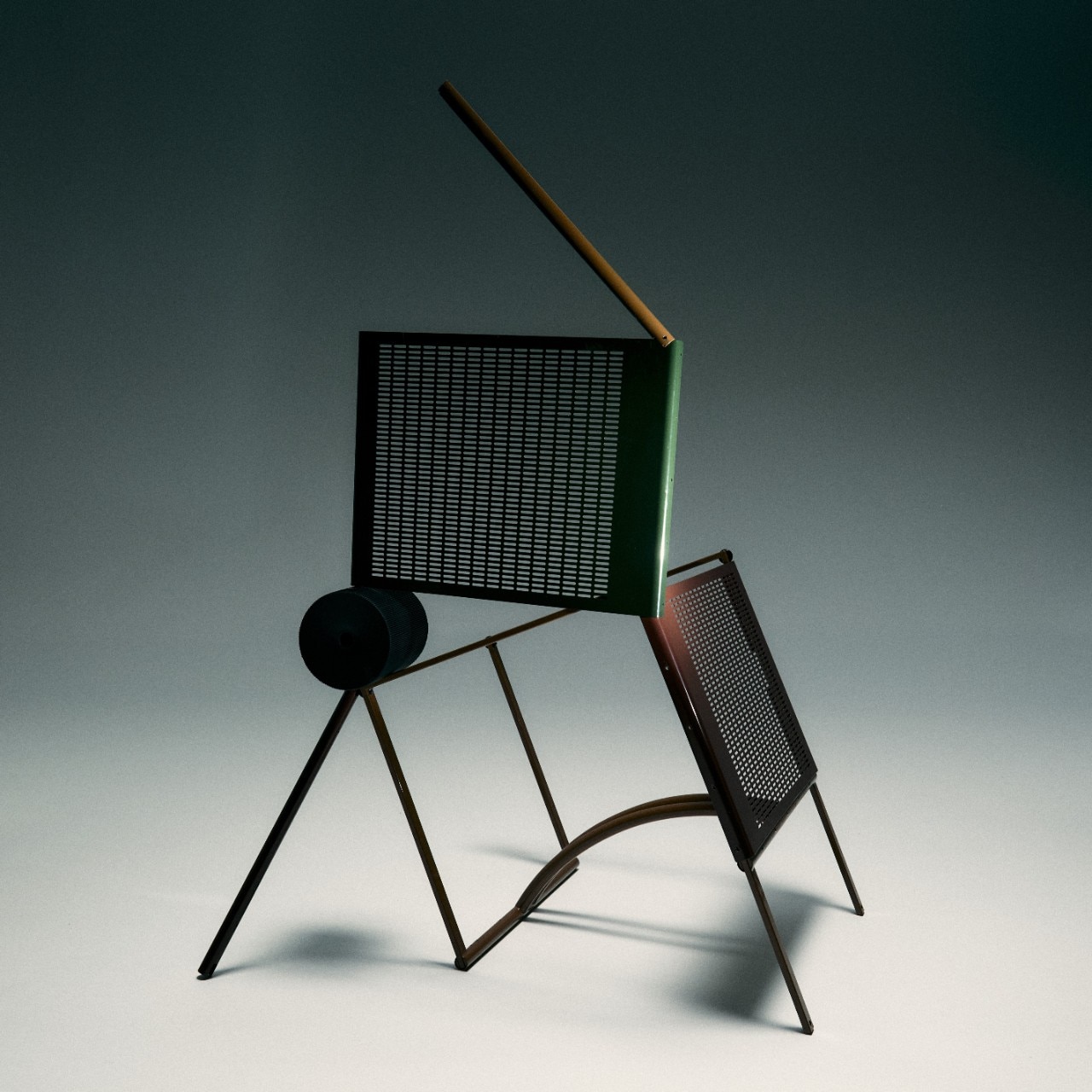This article was originally published on Domus 1086, January 2024.
The sketches for Mario Botta’s first chair date back to 1982, when the Swiss architect was working on the essential forms of what would become one of the most representative products of Alias, a company founded and run, at the time, by Enrico Baleri.
With black ink on tracing paper or squared sheets, Botta began to conceive it: “I wanted to make a product reduced to the minimum,” he says. He went back over the components several times, sketching the slender structure, its thicknesses and finishes. The result was a pared-down object characterised by two unexpected solutions: the black steel structure is interrupted at the point of greatest load – the seat, which is formed by a thin perforated sheet – and ends in a cylindrical backrest in grooved black polyurethane, which absorbs body weight.
Even a chair is architecture and, as such, I tend to reduce it to its bare essentials.
Mario Botta

In those years, Botta was designing several single-family residences, in Stabio, Origlio and Morbio Superiore, Switzerland. These monumental buildings had pure volumes pierced by slits of light and distinguished by vibrant brick texturing. His architectural approach of working by subtraction also appears in his first design project, because, he says, “Even a chair is architecture and, as such, I tend to reduce it to its bare essentials. My design language drives me to avoid adding anything to an architecture’s indispensable volumes, to the idea of a covered space, and the same goes for everyday objects.”
The chair, named Prima – which soon spawned its version with armrests, Seconda – was launched in the early 1980s. It distanced itself from the colourful pop aesthetic of Memphis, or the plastic coverings and decorative style typical of the radical groups. Instead, Botta chose to experiment with his own idiom. Defining himself as a “black-and-white” architect, he gave colour to the materials, which he saw as sacred and “enshrined them in their unadulterated purity”.

The prototype was developed with a blacksmith, who followed the indications that sometimes revealed a “certain naivety”, says the architect recalling when Baleri came to the studio with a huge prototype. “We had a misunderstanding over the measurements, and instead of my light chair, the blacksmith had forged a heavy throne! That’s how we worked, by trial and error, learning from our mistakes and making bold proposals that turned out to be decisive. The “rolling” backrest balanced the linearity of its surrounding metal structure. It’s such a simple thing that even today I can’t explain its success. Or perhaps it was precisely its simplicity that made it timeless.” Alias is celebrating its success with new glossy paint finishes.










